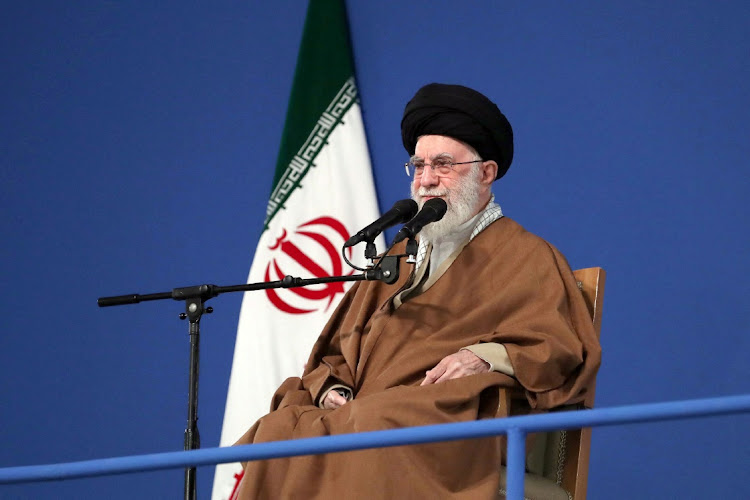The economic landscape of Iran has been significantly impacted by recent geopolitical dynamics. As international tensions escalate, Iran’s currency drops to a record low, plunging the nation into further economic turmoil. This decline is not just a reflection of national policy but also a response to external pressures and sanctions that have crippled the economy.
The effects of these geopolitical uncertainties on the Iranian economy are profound, influencing everything from trade to local markets. Currency value is often a direct indicator of economic stability, and as Iran’s currency continues to diminish in value, the purchasing power of Iranian citizens suffers dramatically. This creates a vicious cycle where inflation rises, causing further depreciation of the currency.
Investors are also wary, as the unstable environment leaves little room for confidence. Analyzing the immediate impact on Iranian markets reveals hesitance among foreign investors, as well as a growing sense of urgency among local businesses to adapt to the rapidly changing economic climate. Without a stable currency, planning for the future becomes exceedingly difficult.
As we look ahead, forecasting future trends for Iran’s currency suggests that unless there is a major shift in the geopolitical landscape, the downward trend may continue. The impact of regional conflicts and global economic conditions plays a crucial role in determining the fate of Iran’s currency and overall economic health.
In response to these challenges, strategic measures taken by governing bodies, particularly by the Central Bank of Iran, will be pivotal. Their decisions will likely influence the strength and stability of the currency, aiming to mitigate some of the damage caused by the ongoing geopolitical tensions.
The current situation envelops Iran in a cloud of uncertainty, showcasing how geopolitical issues can greatly influence economic conditions.
Historical Context: Previous Economic Challenges Faced By Iran
Throughout its modern history, Iran has faced numerous economic challenges that have shaped its current landscape. Geopolitical tensions have often resulted in sanctions, leading to volatility in Iran’s economy. For instance, during the 1979 Islamic Revolution, Iran’s economy experienced a drastic contraction as it lost access to international markets and saw a spike in unemployment rates. This event marked a significant turning point for the country, setting the stage for future economic difficulties.
Another noteworthy period was during the Iran-Iraq War (1980-1988), where resources were diverted to military spending instead of infrastructure and development. This conflict not only devastated the economy but also led to hyperinflation, which significantly diminished the value of Iran’s currency. The repercussions of these historical events are still felt today, as geopolitical uncertainty continues to undermine confidence in the economy.
In recent years, we have witnessed how international sanctions related to Iran’s nuclear program further exacerbated economic conditions. These sanctions have led to fluctuating oil prices and have severely hindered Iran’s ability to generate revenue. Coupled with domestic mismanagement, these factors have led to a climate of economic instability, making Iran’s currency drops a recurring issue amid ongoing geopolitical tensions.
How Geopolitical Uncertainty Affects Iran’s Economy Today
The economic landscape of Iran has been significantly shaped by persistent geopolitical uncertainty. With its currency dropping to a record low recently, the looming threats and tensions in the region are taking a toll on various sectors. The depreciation of Iran’s currency has led to a surge in inflation, impacting purchasing power and consumer confidence. This downward spiral can largely be attributed to international sanctions and political isolation, which have made it difficult for Iran to engage with global markets.
Furthermore, the instability in neighboring countries poses challenges for trade and investment within Iran. As geopolitical risks rise, both local and foreign investors exhibit hesitance, causing capital flight and further depreciation of the rial. The lack of confidence in the currency exacerbates the situation, leading to a vicious cycle where economic instability breeds more uncertainty.
Moreover, the government’s response to these challenges has been mixed. While some attempts have been made to stabilize the currency, such as interventionist policies by the Central Bank, they have often fallen short due to limited effectiveness and credibility issues. As the situation evolves, Iran finds itself in a precarious position, struggling to navigate the complexities of global geopolitics while trying to revitalize its economy.
The interaction between geopolitical uncertainty and economic factors in Iran creates a challenging environment. With Iran’s currency dropping drastically, the implications could be far-reaching, making it critical for policymakers to devise strategic measures that can perhaps mitigate the impact of external pressures.
Analyzing The Immediate Impact On Iranian Markets
The recent news regarding Iran’s Currency Drops To a Record Low Amid Geopolitical Uncertainty has sent shockwaves through various sectors of the Iranian economy. As the value of the Iranian Rial continues to plummet, many investors are becoming increasingly wary. The immediate impact on Iranian markets has been profound, affecting everything from consumer goods to foreign investment.
As the Iranian Rial weakens, the cost of imports has skyrocketed, creating a ripple effect throughout local marketplaces. Consumers are witnessing escalating prices for everyday items, leading to a significant decrease in purchasing power. The inflation rate has surged as businesses attempt to pass on the increased costs to consumers, exacerbating the situation further.
Exporters, on the other hand, might experience a temporary benefit from a weaker Iranian Rial as their goods become cheaper for foreign buyers. However, this advantage is countered by the geopolitical tensions affecting trade relations. Many countries are hesitant to engage with Iran, fearing potential repercussions stemming from ongoing sanctions or political instability.
The financial market has also reacted adversely, with a noticeable drop in stock prices. Investors are pulling back, prioritizing safety over risk in these turbulent times. This shift has made it increasingly difficult for businesses to secure financing, thus stifling growth opportunities and stalling new developments in the market.
The Iranian Rial’s significant decline is marking a crucial turning point for Iranian markets. As Iran’s Currency Drops To a Record Low Amid Geopolitical Uncertainty, the overall economic landscape is shifting—raising concerns for the future as businesses and consumers navigate this challenging environment.
Forecasting Future Trends For Iran’s Currency Amid Ongoing Tensions
The economic landscape of Iran remains highly volatile as Iran’s currency drops to a record low amid geopolitical uncertainty. This precarious situation has not only affected day-to-day transactions but also poses significant questions for the future of the Iranian economy. Speculations abound regarding the trends for Iran’s currency as tensions both domestic and international continue to rise.
To understand the potential future of the Iranian currency, it’s essential to analyze the underlying factors contributing to its decline. Geopolitical instability often triggers a lack of investor confidence. Driving foreign investors away and leading to an increased demand for foreign currency over the Iranian rial. This trend is exacerbated by the economic sanctions imposed on Iran, which have significantly restricted its ability to engage in international trade.
Additionally, if the current geopolitical tensions persist, we may witness further depreciation of the rial. Market analysts are particularly keen on the impact of speculative trading, which can cause fluctuations in currency value, especially in times of uncertainty. If local and international perceptions continue to view Iran as economically unstable, the currency outlook appears grim.
However, there are indications that the Iranian government may adopt strategic measures to stabilize its currency. Observers are closely watching the Central Bank of Iran’s responses to mitigate the effects of these fluctuations. The central bank’s decisions regarding interest rates and foreign exchange reserves will play a crucial role in shaping the future value of the rial.
The forecast for Iran’s currency is intrinsically linked to both regional and international developments. As geopolitical uncertainty continues to loom, the Iranian rial’s resilience will ultimately depend on the effectiveness of the government’s strategic interventions and the ability to restore confidence among investors and the public alike.





